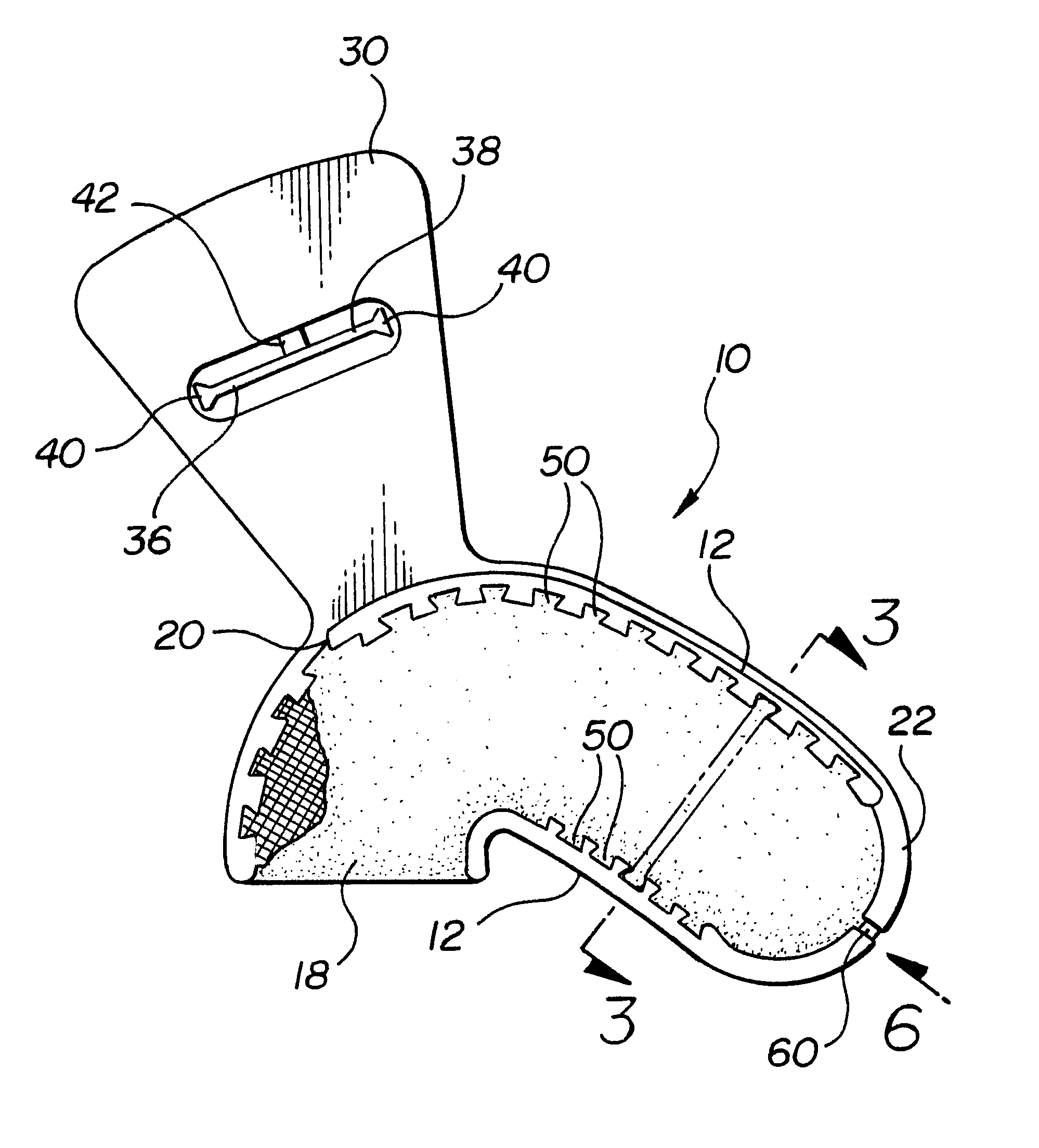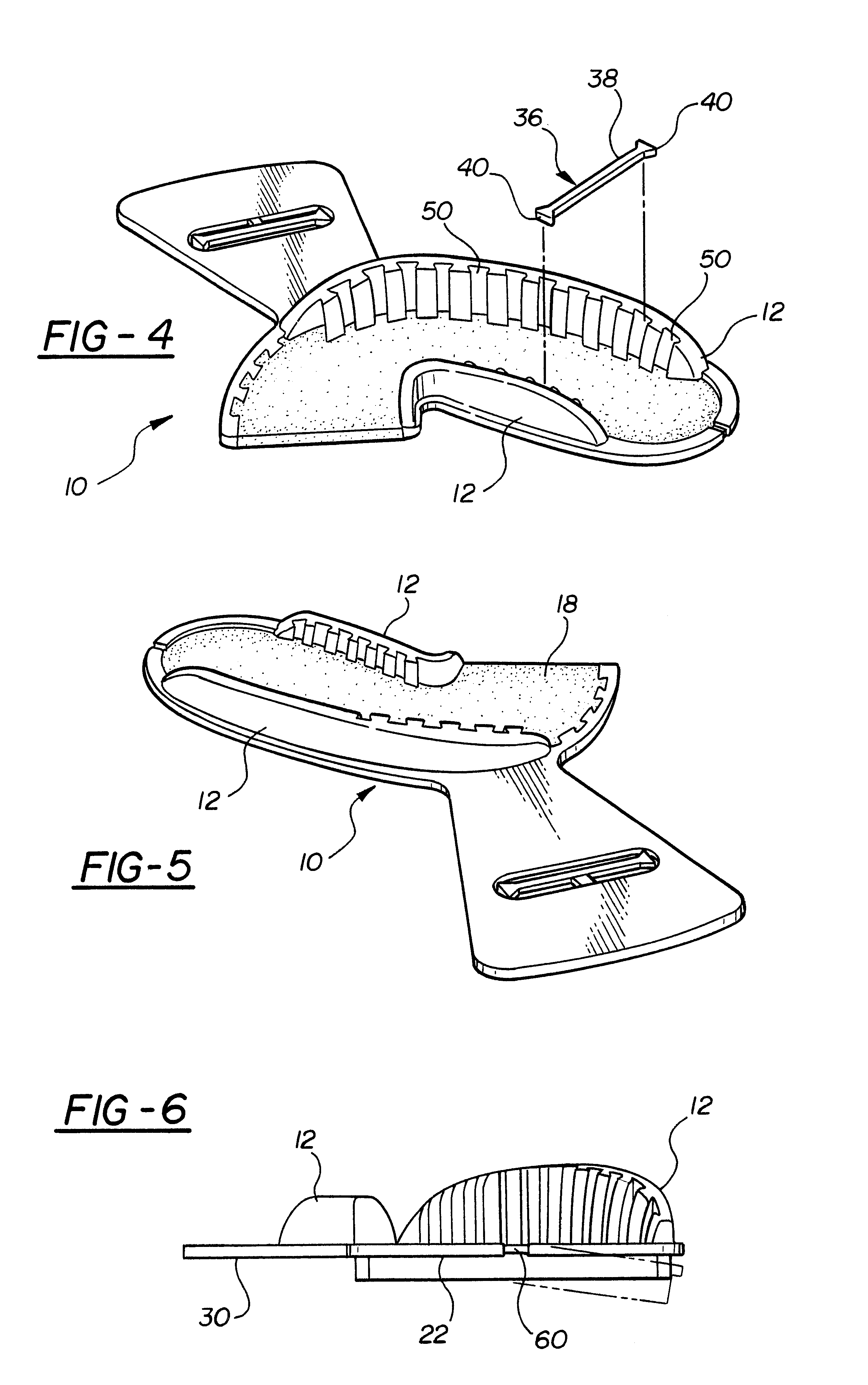Dental impression tray
a dental impression and tray technology, applied in the field of dental impression tray, can solve the problems of different trays used, the overall cost of the dental impression tray, and the rigid sidewalls of the dental impression trays that are sometimes bent outwardly during patient occlusion, so as to reduce the cross-sectional area segment and minimize any spring back
- Summary
- Abstract
- Description
- Claims
- Application Information
AI Technical Summary
Benefits of technology
Problems solved by technology
Method used
Image
Examples
Embodiment Construction
With reference first to FIGS. 2 and 3, a preferred embodiment of the dental impression tray 10 of the present invention is there shown and comprises a pair of sidewalls 12 which are spaced apart and generally parallel to each other and form a channel 14 therebetween. The sidewalls 12, furthermore, are dimensioned to extend substantially a one-half arch of a dental occlusion, i.e. along one-half of a patient's bite. The sidewalls 12 also preferably flare outwardly from each other thereby avoiding contact with the patient's gums while minimizing the amount of dental impression material necessary to make an impression.
Still referring to FIGS. 2 and 3, a layer 16 of material extends between the sidewalls 12 and, together with the sidewalls 12, forms a generally U-shaped channel 14 therebetween. The layer of material 16, furthermore, preferably comprises polycaprolactone which becomes pliable above about 140.degree. F. Other materials, however, such as wax, may alternatively be used. A g...
PUM
 Login to View More
Login to View More Abstract
Description
Claims
Application Information
 Login to View More
Login to View More - R&D
- Intellectual Property
- Life Sciences
- Materials
- Tech Scout
- Unparalleled Data Quality
- Higher Quality Content
- 60% Fewer Hallucinations
Browse by: Latest US Patents, China's latest patents, Technical Efficacy Thesaurus, Application Domain, Technology Topic, Popular Technical Reports.
© 2025 PatSnap. All rights reserved.Legal|Privacy policy|Modern Slavery Act Transparency Statement|Sitemap|About US| Contact US: help@patsnap.com



